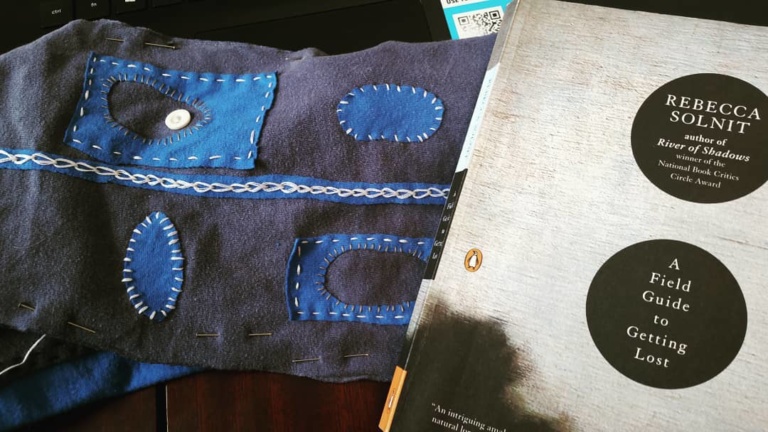Rebecca Solnit never fails to satisfy. I am a come recently convert to her writing, having just discovered her fall of 2018. “A Field Guide to Getting Lost” is no exception to the rule.
“The world is blue at its edges and in its depth. This blue is the light that got lost. Light at the blue end of the spectrum does not travel the whole distance from the sun to us. It disperses among the molecules of the air, it scatters in water. Water is colorless, shallow water appears to be the color of whatever lies underneath it, but deep water is full of this scattered light, the purer the water, the deeper the blue. The sky is blue for the same reason, but the blue at the horizon, the blue of land that seems to be dissolving into the sky, is a deeper, dreamier, melancholy blue, the blue at the farthest reaches of the places where you see for miles, the blue of distance. This light that does not touch us, does not travel the whole distance, the light that gets lost, gives us the beauty of the world, so much of which is in the color blue.” (opening of the first of 4 chapters titled “The Blue of Distance”).
I will admit to skipping much of the chapter (one of the blue chapters) on Yves Klein, who developed and named a blue paint after himself. He did paintings of blue. And she speaks to how this is art. As an artist, I find all the one color painters, the empty canvass painters, emperors with no clothes. That one rubbed me the wrong way so I just let it go.
The last chapter, “The One-Story House” is my favorite of the whole book.
“It is the nature of things to be lost and not otherwise. Think of how little has been salvaged from the compost of time of the hundreds of billions of dreams dreamt since the language to describe them emerged, how few names, how few wishes, how few languages even, how we don’t know what tongues the people who erected the standing stones of Britain and Ireland spoke or what the stones meant, don’t know much of the language of the Gabrielanos of Los Angeles or the Miwoks of Marin, don’t know how or why they drew the giant pictures on the desert floor in Nazca, Peru, don’t know much even about Shakespeare or Li Po. It is as though we make the exception the rule, believe that we should have rather than that we will generally lose. We should be able to find our way back again by the objects we dropped, like Hansel and Gretel in the forest, the objects reeling us back in time, undoing each loss, a road back from lost eyeglasses to lost toys and baby teeth. Instead, most of the objects form the secret constellations of our irrecoverable past, returning only in dreams where nothing but the dreamer is lost.”
There are many ways to get lost. My current way is through hand-sewing. I haven’t done it in a long while, and have never done it for whole pieces, eschewing the sewing machine all together. I did buy bobbins so that I could return to the machine age should I choose. So far I have not even been tempted. In addition to the gloves I am making (fingerless, pictured with the book under review), I will be making a full casual jacket by hand. I give all credit for inspiring this work to Carol Wiebe of Cawstruck (formerly of Silver Spring Studios where I met her blogging years back – maybe over 10) She is my fearless leader in all things “slow sew” as is Natalie Chanin of Alabama Chanin (haute couture as well as community building – a true hero).




3 Comments
Not sure about the book, but the slow sewing is fascinating to me. I think of the women back in say the pioneer days who had to sew all the clothes for the whole family by hand–often at night by the light of the fire or candlelight. I’ve always been fascinated by hand sewing even if I haven’t done much of t, myself, except for small repairs. I wonder how they make clothing from animals skins. I’ve seen women making lace and that’s another amazing feat! A soon to be lost art. Hand embroidered clothing…all the ways people created with just needle and thread. I salute you! 🙂
Thank you! Check your local library – mine seem to have a lot of her work.
Am ordering the book. As you know, you always inspire me. And, the slow stitching….ah….that’s a whole new thing for me and I thank you for that. Lovely post. Lovely.